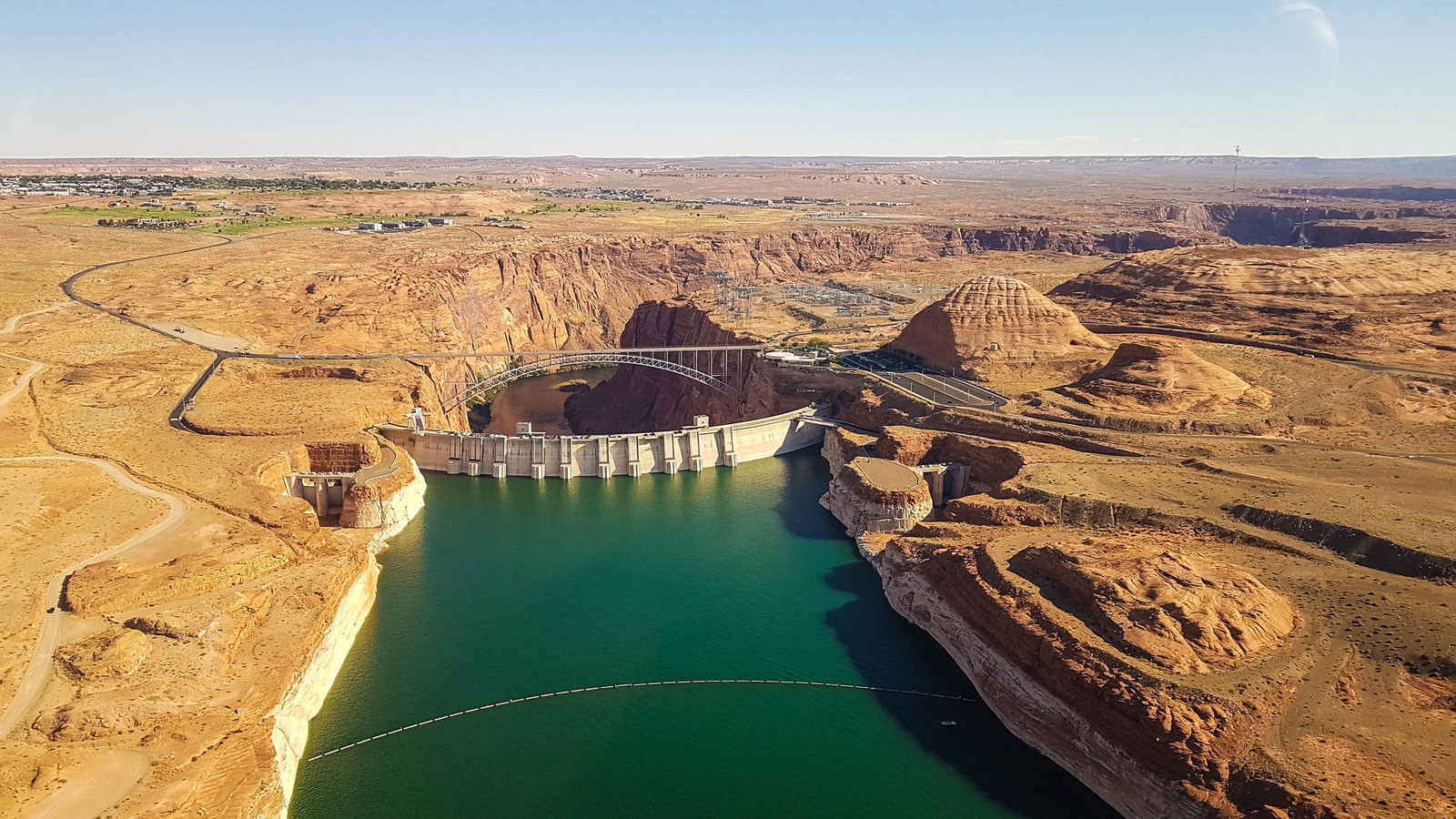Research from USU's Center for Colorado River Studies Cited in U.S. President's Report on Economy
By Lael Gilbert |
The Glen Canyon Dam on the Colorado River.
When President Joe Biden considers the economic trajectory of the country, he weighs factors like the global pandemic, international trade agreements and national rates of inflation. This year, the country’s highest economic report also took into account expertise from Utah State University’s Jack Schmidt and a team of researchers from Center for Colorado River Studies. Work from the USU group was cited in the recently released 2023 Economic Report of the President.
Climate change has been associated with a host of economic costs across the United States. The cited work, which forecasts scenarios for the diminishing Colorado River, is used in the report to alert about potential infrastructure tolls the country may bear as a result of the ongoing megadrought — the worst in 1,200 years. The Colorado River supports $1.4 trillion in annual economic activity and 16 million jobs across the Western U.S. Costly cutbacks in water use are a major economic consideration for Western communities, tribes and government entities as communities subsist and grow across the West.
The research, originally published in the journal Science, details how drought endangers the functioning of Lake Mead and Lake Powell. Water levels in the major two reservoirs on the Colorado River are nearing minimum power pool — the point at which their dams will no longer be able to produce electricity. Costs for maintaining water and power services from federal facilities in the changing climate, and costs for finding alternative solutions for dependent communities, have not been fully estimated but will likely have a significant impact on local and regional economies.
The research cited was based on a key publication from the Future of the Colorado River Project, a multi-year effort led by Schmidt. For the project, Schmidt assembled a broad team of investigators, with authors including Jian Wang and Homa Salehabadi from Utah State University, lead author Kevin Wheeler, Brad Udall and Eric Kuhn. The modeling for the project and writing of the journal article was led by Wheeler, who is the principal of Water Balance Consulting. Jian Wang conducted analysis as a post-doctoral researcher working with the center. Homa Salehabadi is completing her Ph.D. under the guidance of David Tarboton, director of the Utah Water Research Laboratory.
“This is a nod to the impact of this work and a testament to the influence and importance of issues on the Colorado River,” Schmidt said. “When we initiated the project and imagined how all the pieces might come together, it was quickly clear that these critical issues should be getting national attention at the highest level — and now that has happened. It is extremely gratifying, considering the work and time that we’ve invested.”
The Center for Colorado River Studies, based in the Quinney College of Natural Resources, focuses on developing new and non-traditional tools and approaches by which the river-ecosystem outcomes of water supply decisions can be considered. Multiple white papers from the group have identified, articulated and evaluated alternative water-supply management approaches and have received significant attention as new agreements for the water in the river are being debated on a national stage.
WRITER
Lael Gilbert
Public Relations Specialist
Quinney College of Natural Resources
435-797-8455
lael.gilbert@usu.edu
CONTACT
Jack Schmidt
Director of the Center for Colorado River Studies
S.J. and Jessie E. Quinney College of Natural Resources
jack.schmidt@usu.edu
TOPICS
Society 503stories Environment 263stories Water 258stories Climate 151stories Economy 48storiesComments and questions regarding this article may be directed to the contact person listed on this page.







